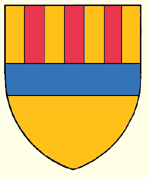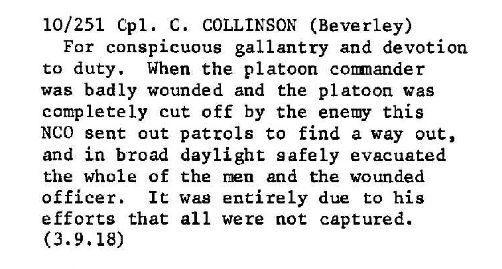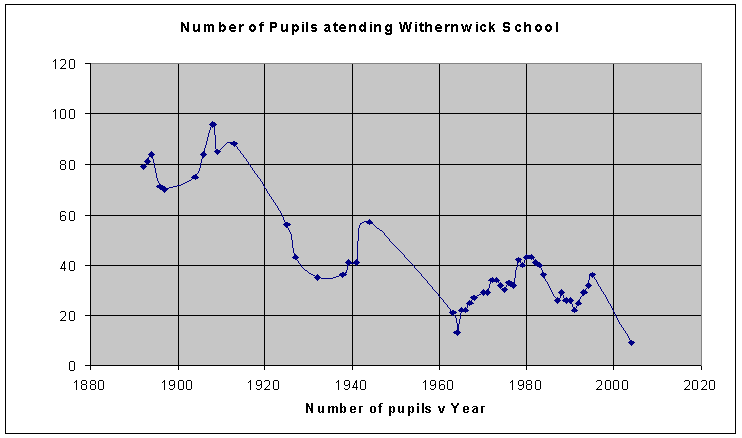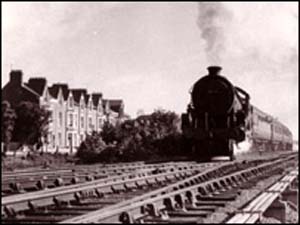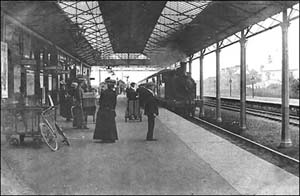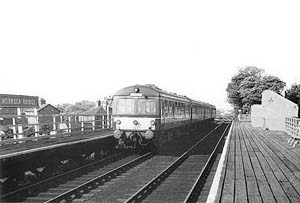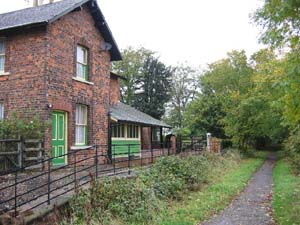Withernwick Village Website
The Website for Withernwick people and anyone else
Hobbies, Interests &
Activities
Items for Sale / Wanted
About Withernwick & the Website
The History of Withernwick
What
we need here are stories and facts about the history of Withernwick.
I'm sure there are some local historians out there.
So let us know via the contact us page.
These links are mostly to articles on this page, but
those marked * are on a different page or external website.
|
|
|||||||
The
Genuki Website - has some useful information - Trade Dirctories from 1823
and 1892 |
|||||||
|
The Archeology of East Riding and lots of other
historical information - from Hull University's Coastal Observatory http://www.hull.ac.uk/coastalobs/general/history/index.html |
|||||||
|
A history of
East Riding (from the same website as the top link on Withernwick) |
|||||||
|
East Riding
Documents or History Happens Fast! Here I will accumulate any official East Riding documents. Why I have put them here (they are also on the About Withernwick page), is that they will remind us of how quickly history happens. In reading them you will find refences to: the village shop, the post office, the village hall, the school and Voase's butchers. You will no doubt notice many other things, so they will form historical documents that will seem all the more scary as the years pass. The 1999 Holderness District Wide Local Plan A Settlement Profile of Withernwick 2008 Withernwick Conservation Area 2009 |
|||||||
|
The Name
Withernwick In the 11th century Withernwick was written down as Widforneuuic (1086 in the Doomsday Book). Possibly ‘dairy farm of the place near the thorn-tree’. OE with + thorn + wīc. (If any one has a copy of the Doomsday Book entry for Withernwick, could they send it to me so that I could include it here on the website). |
|||||||
|
Emmigration
Abroad I'm sure times past were sometimes hard and so emmigration was an option taken by many. There were probably few restrictions on emmigration to wherever you wanted but almost certainly the journey would have been long and horrendously difficult. Obviously reords of such emmigrations are likely to be rare but we do know of one Thomas Hewson of the village who ended up in a town called Lacolle, in Quebec, Canada. - Click here for more information |
|||||||
|
The 1834 Electoral
Register An interesting insight into life in Withernwick in the early Nineteenth century. The 1834 electoral register shows that only property owners were entitled to vote and in the village at the time that did not include that many people; of course they were all men. It does show the important properties and people in the village at the time. Click here. |
|||||||
|
The Trades of Withernwick in 1841 The majority of people in the village at this time were described as agricultural labourers. Farming was highly labour intensive at this time and so it is inevitable that so many would be employed as farm workers. The rest of the people might be described as working in service trades, working to serve the bulk of the village of farm workers. Click here to see a list of trades and jobs in Withernwick in 1841. |
|||||||
|
Holderness
in the the Stone Age, Bronze age and Iron age An interesting acticle on archeological discoveries at West Furze near Barmston but no doubt the area around here was very similar. So discover what the villagers of Withernwick looked like and how they lived 2000+ years ago. Click here (to open a pdf file) See also the Coastal Observatory website (same as above) for more general archeology of the area. |
|||||||
The de
Faucomberge's of Rise and Withernwick
One such family are the de
Faucomberge’s who are described as Lords of Rise and Withernwick.
Here is a bit of the family tree of the de Faucomberge’s. (The
Vicar of St Alban’s at the time seems to be one Roger de Holland, so we
know of one other person connected with Withernwick at the time). Walter
de Faucomberge, Lord of Rise and Withernwick, (born ~1140 and died ~1216).
He was married to Agnes Fitz Simon (born about 1160) who was the daughter
of Simon Fitz Simon (born ~1144) [ so the mother was 16 when Agnes was
born]. Born Anastasia Neville, she was the daughter of Sir Ralph Neville, of Raby Castle, Durham, and his first wife Euphemia de Clavering. A co-heir of her maternal grandfather, Sir John Clavering, of Warkworth, Northumberland, she was married (c1306) to Sir Walter de Faucomberge, heir to Lord Faucomberge, but the marriage remained childless. Her husband was slain at the battle of Bannockburn in Scotland (1314), but duing his absence Anastasia had become involved in an incestuous liasion with her father, Sir Ralph Neville, the revelation of which caused a major scandal. Neville was convicted of his crime (1313), whilst Anastasia was sent to live in retirement at the estate of WITHERNWICK, in Holderness.
Sir Walter de Fauconberg (dvpsp Bannockburn 24.06.1314) Married Anastase
de Neville (daughter of Sir Ralph de Neville of Raby) John
de Fauconberg, 3rd Lord, Sheriff of York, Governor of York then Berwick (b
1290, d 17/8.09.1349) Married. Eve (probably daughter of Sir Ralph de
Bulmere of Wilton, Lord Bulmer) Walter
de Fauconberg, 4th Lord (b 1319, d 29.09.1362)
Married (c12.1330) Maud
Patshull (daughter of Sir John de Patshull of Bletso and Pateshulle) Thomas
de Fauconberg of Skelton, 5th Lord (b 20.07.1345, d 09.09.1407) Married (before
17.11.1366) Constance de Felton (d 05/6.1402, daughter of John de Felton) Sir
John Fauconberg of Whitton (dvpsp 20.07.1405) Married Joan Conyers (d
06/7.11.1438, daughter of Sir Robert Conyers of Ormesby) Isabel
Fauconberg (dvp) Married (18.10.1406)
John de Wilton who remarried . Joan de Bromflete (d 04.03.1408/9, daughter
of Sir Thomas de Bromflete) Joane
Fauconberg, Baroness Fauconberg (b 18.10.1406, d 11.12.1490/1) Married
(before 28.04.1422) Sir William Nevill, Lord Fauconberg, Earl of Kent,
Admiral of England (d 09.01.1462-3) |
|||||||
|
"The
Blind Fiddler" of Withernwick, East Riding of Yorkshire by W. G. B. Page A lecture
delivered at the Royal Institute, Hull
. |
|||||||
| The
Economy in Medieval Holderness An study of the economy of medieval Holderness. There is no specific mention of Withernwick, but no doubt the farming etc was much the same all over Holderness. The landscape was largely a damp place, full of meres and marshes and the only arable crop available would have been oats. But from the marshes and meres a thriving economy would have been built on fishing and fowling. Sheep would also have been very important in this area. This paints a very interesting vision of life in medieval Withernwick when the Lambwath would have probably been a mere much as it became in June 2007 - click here. Much of the information comes from the Chronicles of Meaux Abbey; it is hard to believe nowadays that an insignificant place such as Meaux once would have had a powerful influence over Holderness including Withernwick. Click here |
|||||||
| 1901
Census I have managed to copy the whole 1901 Census for Withernwick. Click on each pdf files to see the entries. The Road names are complicated and not quite as we know them now, I've called them as they are on the census but also written what we think they are now. Also there are very few house numbers or names, so many of the households are in groups but with arbitrary numbers that are not house numbers. I have added notes in italics,
for example when I have recognised a name I've come across before or
when I can tell the person was of particular significance.
Obviously, if you look through and recognise any names, then let me
know and I will add on any details that you send me. 1911 Census |
|||||||
| The War Memorial
We ought to remember the previous residents of Withernwick or
nearby who
gave their lives for what they believed in. First World War - Click here for the full Roll of Honour of men who fought in World War 1
Second World War - Click here for the full Roll of Honour of men who fought in World War 2
For more records on those killed in wars visit For more records of the East Yorkshire Regiment - Click
here |
|||||||
| The History of Withernwick
School
Pupil population of Withernwick school 1892 onwards The graph below shows the number of pupils attending
Withernwick School, the trend is fairly obvious and
self-explanatory. Although it's not obvious what happened in 1964 as
to why the number of pupils dropped to 13.
Also interesting are the various epidemics that have occurred
in the village over the years, health care as improved equally
dramatically over the years.
Obviously some things in life have changed for the better! 1893 20-30 absent due to influenza 1846 Thomas Palmer |
|||||||
| Life Expectancy in 18th Century Withernwick We have recently aquired two extensive family trees that consist largely of people born in Withernwick during the 18th century (click here to see the tree of the Leaper, Jackson, Runton and Riby familes, click here to see the tree of the Palmer family). They give nearly 60 people for whom we have a year of birth and an age at death. This is a relatively small sample but it is good enough to draw some consistent conclusions from. The graph below shows the results; more results will be added as they become available. 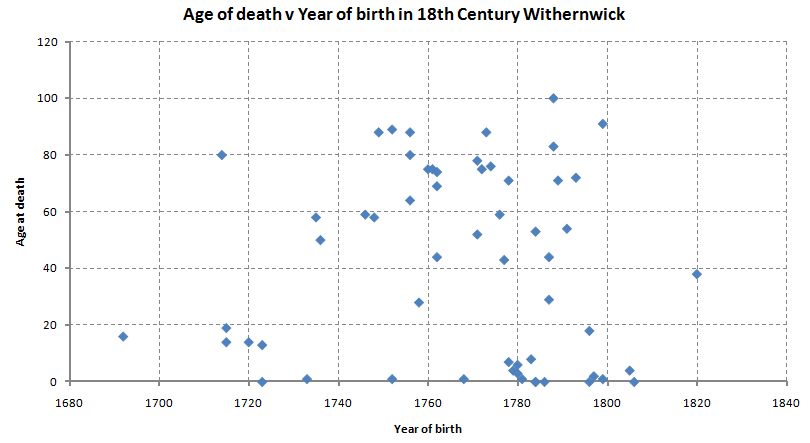 As we might expect it clearly shows a high level of infant/child mortality. This was probably a fact of life in the 18th century, diseases that we no longer know anything of would have taken a fearful toll at times; there is even a prominent cluster around 1780. But what is also clearly noticeable is that if a person reached adulthood and developed some strength and immunity there was a good chance of living to a good age; the oldest person was one Robert Palmer (1736-1836) who reached 100 years old. People in the village at the time generally had jobs with a high degree of physical exercise, they probably had a fairly healthy diet and they would have mostly had access to clean water. It still does however paint a picture of a life where people live with death as an almost everyday occurence but it may have still been preferable to living in a town. During this period the industrial revolution will have begun and would have, for example, drawn Withernwick people to Hull; as with many such times, they will have certainly discovered that the streets there were not paved with gold. |
|||||||
| The Hull to
Hornsea Railway |
|||||||
|
|
It as now been
about 45 years since trains ran from Hull to Hornsea. But the
service would have once been very important to the people of
Withernwick, even they they had to travel to mile or so to get to
Whitedale station.
Dr Beeching obviously didn't consider the line viable and hence it closed. I guess many of us now think, with hindsight, that that decision was shortsighted, maybe now a link direct into the centre of Hull would be an economical and well used option. |
||||||
| Anyway here are some
nostalgic photos of the line when in use. The above one shows a
relatively lengthy train approaching Hornsea Station, probably
loaded with holiday makers heading to the seaside in the days before
package holidays to Benidorm.
The photo on the right is of Hornsea Station in c1910. Obviously well used, as the photo shows. The station does of course survive, but now turned into houses. |
|
||||||
|
|
The photo on the left
shows a 'modern' diesel multiple unit waiting at Hornsea Bridge
Station. This station is now much more difficult to visualise from
the site as it is today. The bridge as gone as has all vestige of
the station itself. The only evidence are the embankments which
still survive on each side of the modern day roundabout. Click here to see a timetable from 1922 just before The NER became the LNER Click here for a timetable for the line from the LNER days between 1923 and 1948. And another from 1957 in British Rail days. |
||||||
Today, of course, the railway route has now become a cycle path between Hull and Hornsea. Due to the unhilly nature of Holderness there were very few bridges between Hornsea and Hull to maintain. No doubt, however, there were a lot of level-crossings to annoy drivers, particularly on the A165. Many of the station buildings do survive as they make convenient and useful houses. The photo on the right shows the buildings at Whitedale Station, where 45 years ago + we might have been standing waiting for the 10.30 to Hull! |
|
||||||
The line originally opened
in 1864 and finally closed for passenger traffic in 1964 and for
goods traffic (to Hornsea Bridge) in 1965. The station masters from
1871 to 1911 from the censuses are:
|
|||||||
| If you wish to know more about the Hull
to Hornsea line here are a few links to start you off.
A great collection of photos ont eh BBC Humber website. The Wikipedia entry gives a conscise history
of the line. This website is great for photos and description of Britain's
Disused stations - this link takes you to all the stations on the
Hull to Hornsea line The Hornsea Old and New website has lots of nostalgic photos
of Hornsea, this link takes you to the railway part and has lots of
photos, posters, fliers, tickets and timetables. |
|||||||
